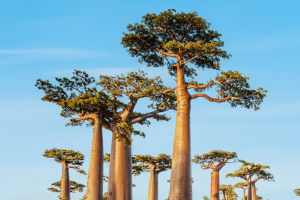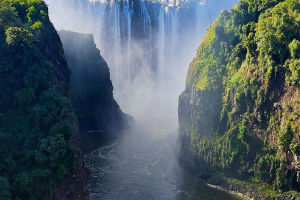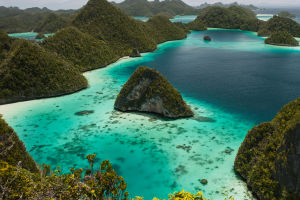Bolivia is one of South America's most surprising and otherworldly destinations.
For Lykkers who crave vast open spaces, remote highland adventures, towering peaks, and markets filled with traditions and mystique, this landlocked gem offers experiences unlike anywhere else on Earth.
Nestled between the Andes and the Amazonian forest, Bolivia is raw, intense, and breathtakingly beautiful. Here's a curated selection of the top things to do in Bolivia, designed for explorers seeking something out of the ordinary.
1. Salar de Uyuni
The World's Largest Salt Flat
Salar de Uyuni is a surreal white desert stretching over 10,000 square kilometers at an elevation of 3,650 meters. It creates an endless reflective surface during the rainy season and resembles a frozen sea during the dry months.
How to Visit
The best way to experience it is through a 3- to 4-day guided tour departing from Tupiza, Uyuni, or San Pedro de Atacama (Chile). Prices range from €160 to €250, depending on the tour length and agency. Tours include meals, accommodation (often in salt hotels), and a 4x4 vehicle with a driver-guide.
Highlights of the Tour
- Incahuasi Island with towering cacti
- Flamingo-filled Laguna Colorada, Laguna Verde, and Laguna Negra
- Dali Desert's rock formations
- Ancient Inca ruins at San Antonio
- Starry skies and breathtaking sunrises
A rare bonus: if it rains, the salt flat transforms into the largest natural mirror on Earth.
Uyuni Salt Flat, Salar de Uyuni
2. Valle de las Animas
A Hidden Geological Wonder
Just 12 km from La Paz, this dramatic valley features towering spires of rock, some over 200 meters high. They resemble frozen waves and create a dramatic contrast to the surrounding urban landscape.
How to Get There
Take the Pumakatari bus from Mercado Camacho to Calle 60. From there, catch a minibus (routes 42 or 975) heading toward Uni, and ask to be dropped near the footbridge just before the village. A scenic trek leads to the formations.
Why Go
The area remains under the radar, making it perfect for those seeking peace and photogenic landscapes with minimal crowds.
Valle de las Ánimas
3. Sucre and Potosí
Two Historic Highland Cities
Sucre, Bolivia's constitutional capital, is known for its white buildings, gentle climate, and walkable historic center. It's an ideal place to unwind and explore markets, museums, and plazas.
Sucre
Potosí, once one of the richest cities in the world due to silver mining at Cerro Rico, now offers insightful tours into its historic tunnels and galleries. These visits provide a powerful glimpse into the region's complex past and are usually priced around €10–€15.
Tip
Spend at least 2 days in each city to appreciate their different characters.
4. La Paz Cable Car System
Sky-High City Transport
La Paz features one of the most unique public transportation systems: a network of cable cars that connect various parts of the city. Tickets cost less than €1 per ride.
Top Routes to Try
- From the city center to El Alto
- Down to Sopocachi, a lively arts district
- Viewpoints for Illimani, the snow-capped peak watching over the city
A ride during sunset offers panoramic views of La Paz and is one of the most memorable experiences in the city.
5. Toro Toro National Park
Dinosaur Footprints and Deep Canyons
Located in a remote region near Cochabamba, Toro Toro National Park is a paradise for nature and fossil lovers. Tankar Pampa features hundreds of preserved dinosaur footprints along rock beds.
How to Visit
From Cochabamba, minibuses (around €10) take 4–5 hours to reach the village of Toro Toro.
Don't Miss
- Canyon El Vergel with natural pools
- Umajalanta Cave, one of the deepest in Bolivia
- The "Stone City," a maze of natural rock towers
A 3-day stay is ideal to explore the park's top sights.
6. Climbing Huayna Potosí
A High-Altitude Adventure
This glacier-covered peak near La Paz reaches over 6,000 meters and can be climbed in 3 days with proper acclimatization. It's considered one of the most accessible high peaks in the world—but still physically demanding.
Requirements
Good physical condition and altitude preparation. Tours, including equipment and guides, cost around €180–€230.
Why It's Worth It
At the summit, the view extends across endless peaks and clouds—an unforgettable reward.
7. Sajama National Park
The Land of Volcanoes and Hot Springs
South of La Paz, near the Chilean border, lies this remote and powerful landscape. Sajama (6,542 m) is Bolivia's highest peak, flanked by twin volcanoes called Payachatas.
What to See and Do
- Natural hot springs surrounded by mountains
- Ice formations known as Penitentes near the peaks
- Andean villages with traditional architecture
Sajama is ideal for trekking, soaking in geothermal waters, and disconnecting from modern life.
In Summary
Bolivia is a land of extremes—high-altitude salt deserts, dinosaur trails, mountain summits, and silent valleys. Each destination in this list offers Lykkers the opportunity to step into a place that feels like another planet. Traveling through Bolivia requires flexibility and a taste for adventure, but the payoff is immense: pristine nature, fascinating culture, and memories that will last a lifetime.


